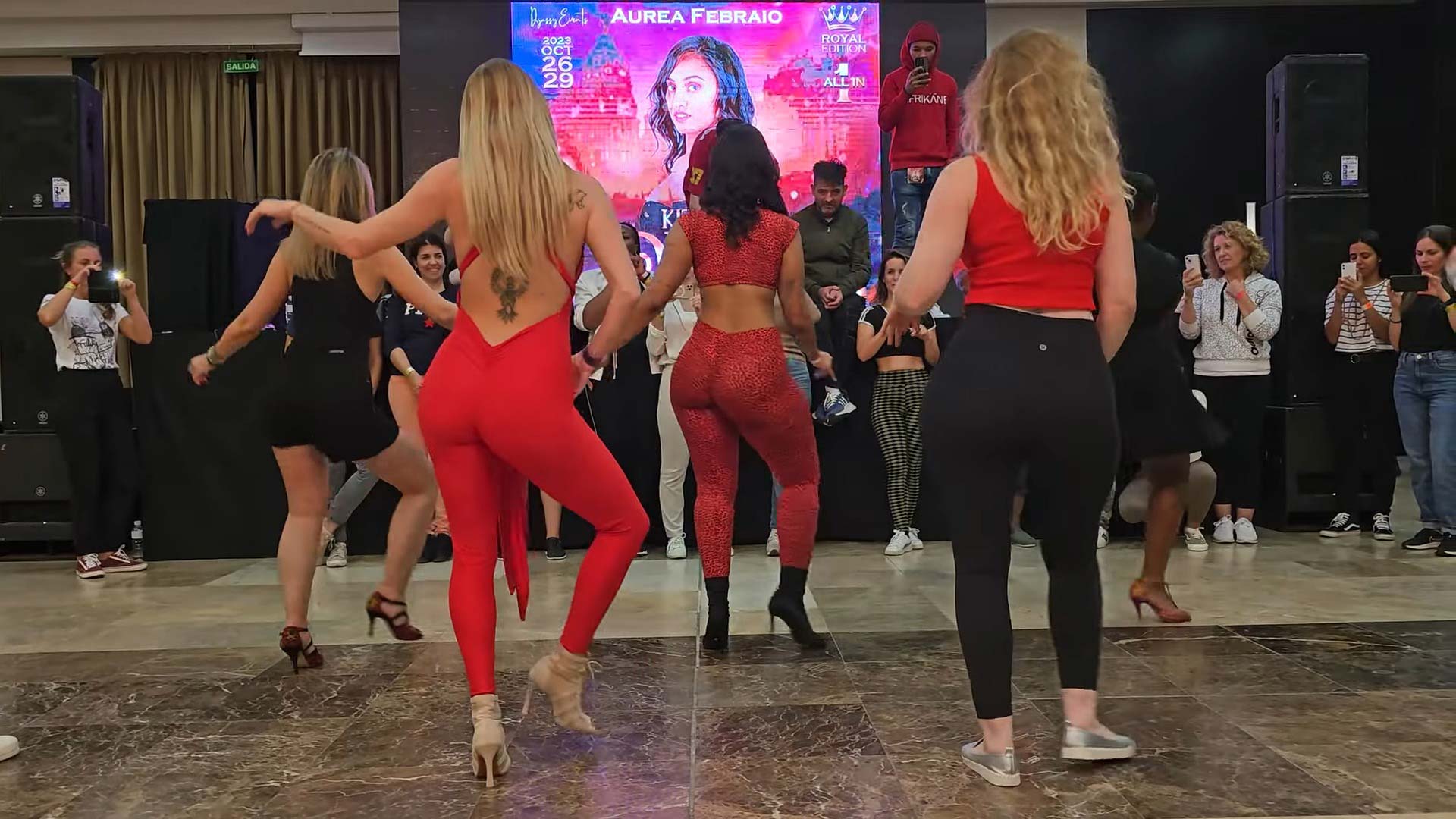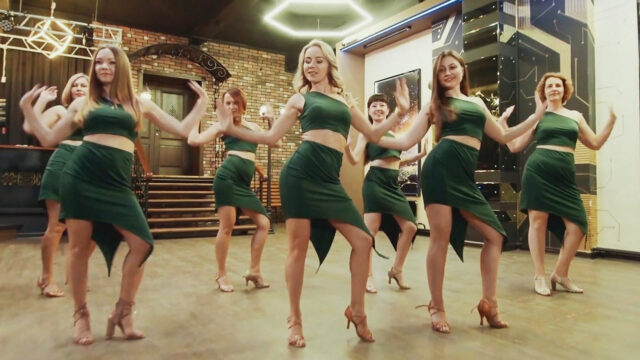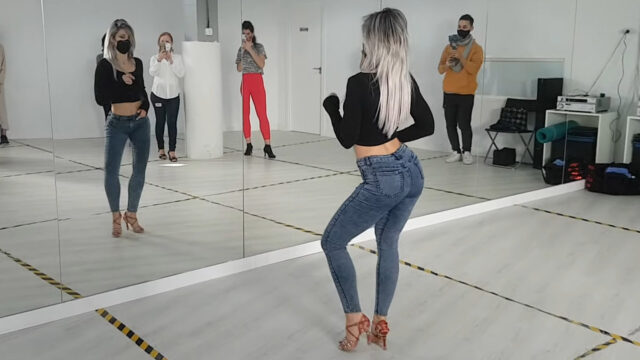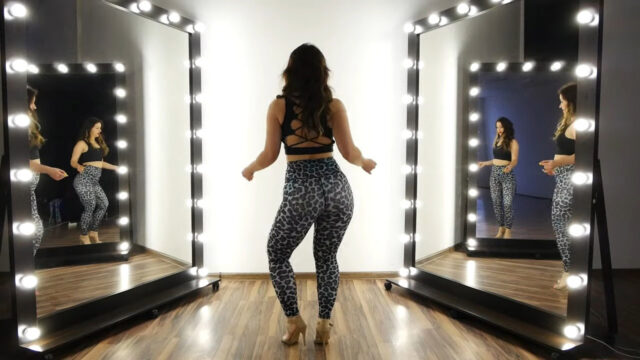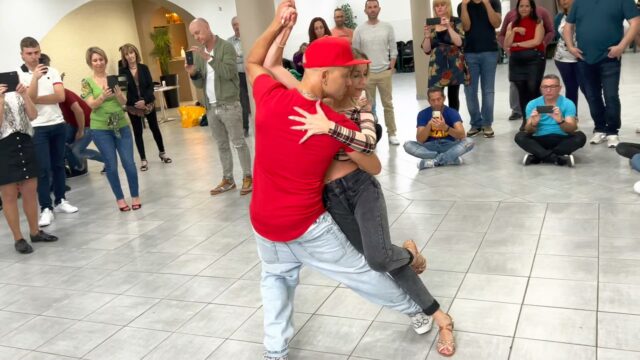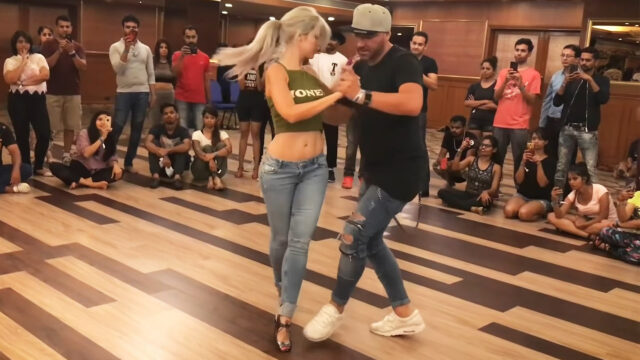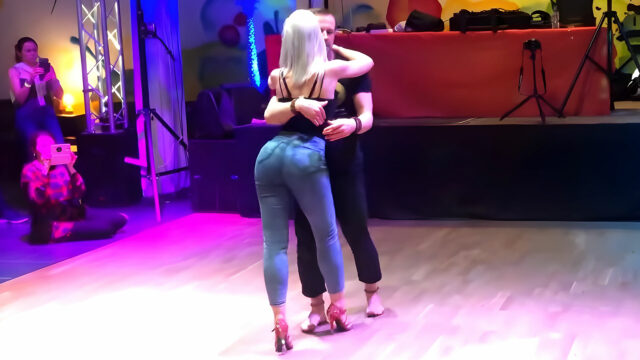The moment the dancer steps on stage bathed in crimson, we instinctively lean forward in our seats. Our hearts beat faster. The atmosphere becomes charged with energy. What is it about the color red that captivates us so? This fiery hue has a psychological power when used in dance performances that can’t be matched by cooler, more subdued shades. Check out this video for example and notice where your attention goes during this Kizomba Lady Styling performance:
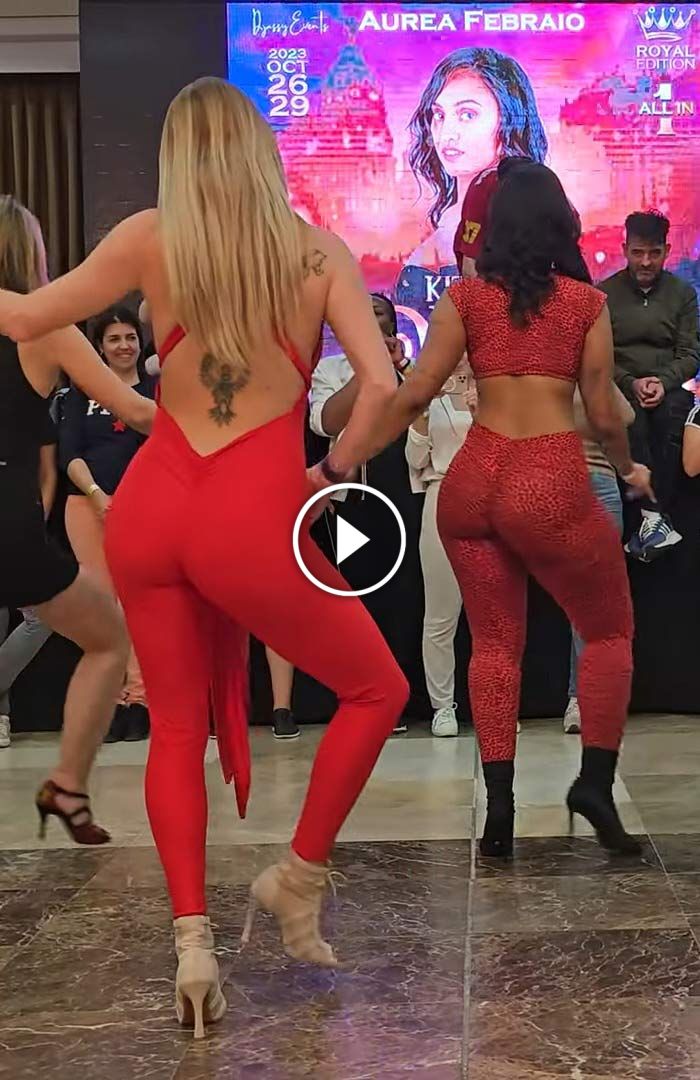
Red immediately fires up our emotions. It symbolizes passion, desire, love, anger – all feelings that connect deeply with the human experience. When a dancer is dressed in red, our minds make an instant visceral association with these powerful forces. We anticipate an explosive performance that will move us profoundly. Like watching a lit fuse burn down, seeing a dancer in red creates an exhilarating sense of impending release.
- Urban Kiz Lady Styling Choreography by Natalia Ulanova
- At what age is it OK to enroll girls in a dance promoting that level of sensuality?
- Isolate Like a Pro: Kizomba Hip Control Secrets Revealed
The drama of the color also sets the stage for a mesmerizing display of talent and technique. Like a matador’s cape, red attracts our full attention with little effort. It lets the dancer direct our focus precisely where they wish. We become transfixed, unable to look away. This allows the artistry and athleticism of the dancer to truly shine. Each leap appears higher, each turn more thrilling, each expression more poignant.
Beyond passion, red also evokes primal life energies. Its resemblance to blood gives it a vital, almost dangerous aura. When a dancer wears red, we perceive them as embodying the life force itself – active, confident, beautiful, wild. They become larger than life in our eyes, like the embodiment of dance itself. Even the meekest dancer discovers a sense of empowerment when dressed in ruby.
Red also conveys a sense of urgency and immediacy. Unlike cooler, more passive hues, it demands our full attention right now. This allows dancers to create gripping narratives and convey intense emotions that immerse the audience. Anguish, longing, desire, or joy can all be expressed with intimate rawness against red’s dramatic backdrop. The color’s intensity strips away pretense, connecting us directly to the dancer’s message.
Some red costumes evoke specific connotations that choreographers skillfully utilize. The flirtatious power of rose red offers a subtly sensual accent to flowing dances like the rumba. Crimson’s royal air lends grandeur to stately pieces like the paso doble. Scarlet’s gaudiness and vibrancy injects cheerful energy into upbeat jigs or can-can routines. Brick red’s rustic character grounds folk dances in earthy charm.
Of course, red’s specific meaning changes with shade, material and cut. A bold matte crimson leotard has a different psychological impact than a little girl’s airy, translucent red tutu. Costume choice is hugely influential in dance storytelling. But whatever the styling, red’s intrinsic passion persists.
This passionate nature makes red costumes particularly well-suited for women. In many cultures, red has traditionally symbolized female power, fertility, vibrancy and mystique. Rather than diminish dancers, red enhances their presence and authority. It lets them reclaim historically “feminine” traits like emotional expressiveness as sources of strength.
Audiences instinctively understand this. When we see a woman spotlighted in red, moving with skill and self-assurance, we recognize her confidence and connect with her display of empowerment. She becomes less an object of art and more a subject making her own artistic statement. We no longer merely watch her dance – we feel her dance with her.
So the next time you see a dancer bathed in crimson, consider the multifaceted psychology behind this captivating color. Red may be bold, but it is never shallow. It draws us in on primal levels of pure passion, then reveals reflections of the human soul. In the fleeting art form of dance, that is a rare and precious gift.
If you enjoyed this article, feel free share it with your friends and let them know what you think about it. Also, consider checking out our most recent posts and stay in touch. Thank you!
